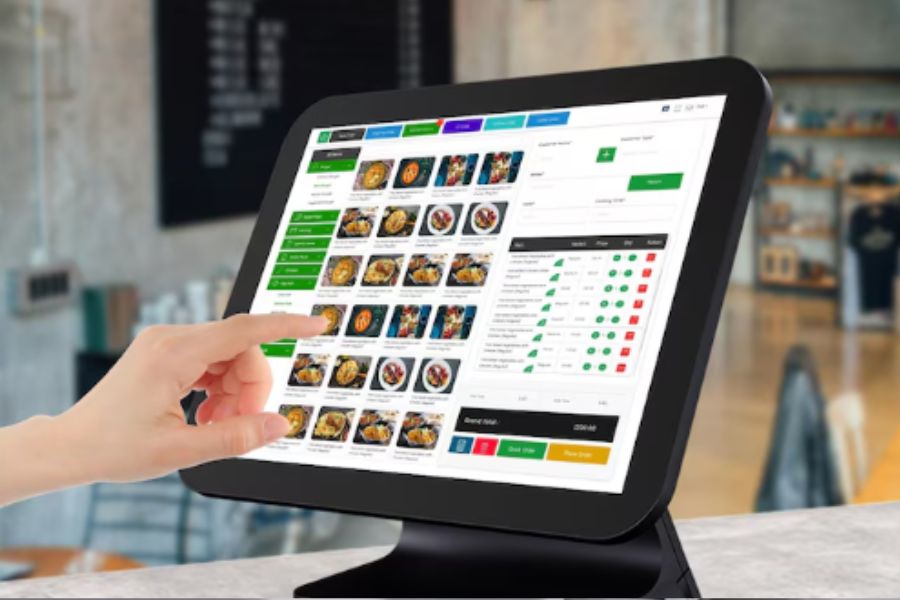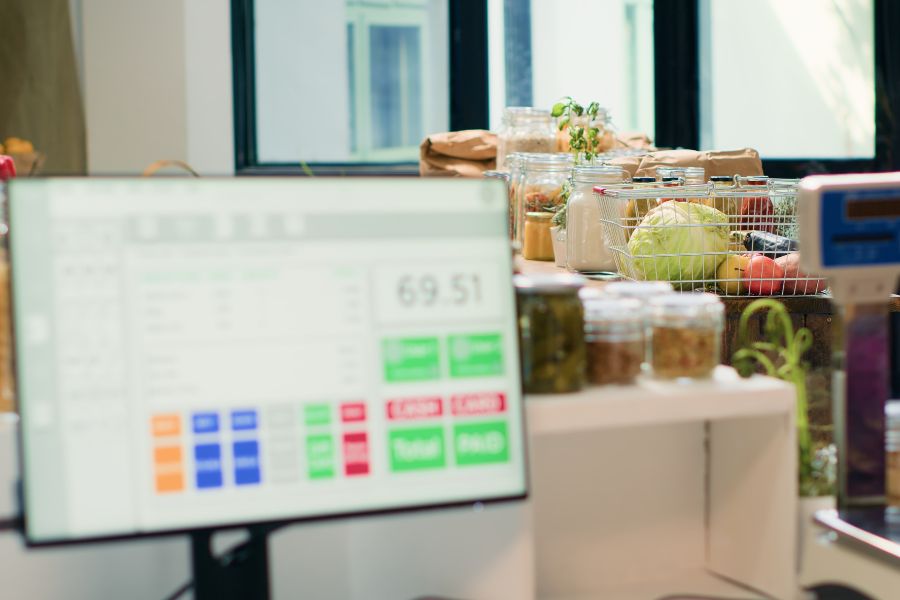Are you ready to take your ecommerce game to the next level? In today’s fast-paced online marketplace, staying ahead is crucial. That’s where POS ecommerce integration comes in. Imagine effortlessly syncing your offline and online sales channels, managing inventory easily, and providing a seamless shopping experience for your customers. In this blog post, we’ll explore the world of POS ecommerce integration and unveil how it can transform your sales strategy across every channel. Let’s explore how to revolutionize the way you do business!
What is POS ecommerce Integration?
POS ecommerce integration refers to the seamless connection between an online store and a physical retail point of sale system. This integration allows retailers to manage their online and offline sales channels from a single platform, streamlining operations and enhancing customer experience.
With a POS ecommerce integration, inventory, sales, and customer data are synchronized across all channels, providing retailers with real-time insights into their business performance.
6 Reasons You Need an ecommerce POS Integration
POS ecommerce integration has become increasingly essential for businesses looking to thrive in both online and offline environments. This integration seamlessly connects your online store with your physical retail operations, providing a host of benefits that can significantly boost your business performance and enhance customer experience.
Sell Concurrently in Multiple Locations
With an ecommerce POS integration, you can expand your sales reach and cater to customers across multiple locations simultaneously. Whether you’re operating brick-and-mortar stores, pop-up shops, or participating in events, this integration allows you to manage all sales channels from a centralized platform.
A retailer with both an online store and several physical outlets. Through POS integration, they can synchronize inventory levels in real-time, ensuring that products are available for purchase regardless of the customer’s preferred shopping channel.
This not only maximizes sales opportunities but also improves overall efficiency by eliminating the need for manual inventory adjustments across multiple systems.
Real-time Inventory Visibility
One of the key advantages of ecommerce POS Integration is real-time inventory visibility, which helps prevent the risk of overselling. By syncing inventory data across your online and offline channels, you can ensure that product availability is accurately reflected to customers at all times.
This eliminates the frustration of customers purchasing out-of-stock items and reduces the likelihood of negative reviews or lost sales opportunities.
For instance, imagine a scenario where a customer places an order online for a popular product that is also available in your physical store. Without integration, there’s a risk of overselling if the inventory data isn’t updated promptly. However, with POS integration, the inventory levels are instantly updated across all channels when a sale is made, ensuring that both online and offline customers have access to accurate stock information.
Provide Discounts and Promotions Across Channels
Another compelling reason to invest in e-commerce POS integration is the ability to provide discounts and promotions seamlessly across all channels. Whether you’re running a sale on your website or offering in-store promotions, this integration enables you to synchronize pricing and promotional strategies effortlessly.
By delivering a consistent experience to customers regardless of their preferred shopping method, you can enhance brand loyalty and drive sales.
Consider a scenario where a retailer wants to offer a limited-time discount on a particular product line. With POS integration, they can easily apply the discount to both online and in-store purchases, ensuring that customers receive the same benefits regardless of where they choose to shop.
Eliminate the Need for Manual Data Entry
Manual data entry is time-consuming and prone to errors, especially when managing inventory, sales, and customer information across multiple platforms. An e-commerce POS integration automates data synchronization, reducing administrative overhead and ensuring data accuracy.
By automating data transfer between ecommerce and POS systems, retailers eliminate the need for manual data entry, minimizing the risk of errors and discrepancies. This streamlines operations, enhances efficiency, and frees up staff to focus on more strategic tasks.
A small boutique retailer integrates its ecommerce platform with its POS system to automate inventory management and order processing. Instead of manually updating inventory counts and reconciling sales data, staff can rely on real-time synchronization, saving time and reducing the likelihood of errors.
Utilize the Data to Gain Greater Insight into Your Customers
eCommerce POS integration empowers businesses to leverage data analytics for deeper insights into customer behavior and preferences. By consolidating customer data from online and offline transactions, you can gain a comprehensive understanding of your audience and tailor your marketing efforts accordingly. From identifying purchasing patterns to segmenting customers for targeted campaigns, this integration unlocks a wealth of opportunities for driving engagement and sales.
For example, a retailer can use integrated data to analyze which products are popular among online shoppers versus in-store customers. Armed with this information, they can optimize their product offerings and promotional strategies to better meet the needs of each segment.
Additionally, by tracking customer interactions across channels, businesses can personalize communication and recommendations, fostering stronger relationships and driving repeat business.
Enhance the Experience for Customers
Ultimately, ecommerce POS integration is all about enhancing the overall shopping experience for customers. By seamlessly bridging the gap between online and offline channels, businesses can offer greater convenience, flexibility, and personalization to their audience.
Whether it’s enabling buy online, pick up in-store options or providing consistent pricing and promotions across channels, this integration ensures that customers can engage with your brand seamlessly across multiple touchpoints.
For instance, imagine a customer who discovers a product online but prefers to see it in person before making a purchase. With POS integration, they can easily check the product availability at their nearest store and reserve it for pickup, combining the convenience of online shopping with the immediacy of in-store experience. This not only delights the customer but also drives foot traffic to physical locations, creating opportunities for additional sales and engagement.
How Do You Integrate the POS software into your Ecommerce Site?
Integrating your point of sale system with your ecommerce site can streamline your operations and provide a seamless experience for your customers. Here’s a step-by-step guide to help you through the process:
- Assess your point-of-sale: Begin by evaluating your current POS system. Consider its features, compatibility with ecommerce platforms, and any limitations it may have.
- Think about what you need: Determine your specific requirements for integrating your POS with your ecommerce site. Consider factors such as inventory management, order processing, and reporting capabilities.
- Inquire wisely about your online business and POS: Conduct thorough research to find ecommerce platforms and POS systems that align with your needs. Look for solutions that offer easy integration and provide comprehensive support. ConnectPOS is one of the best solutions that has many features and easy integration for any business.
- Install POS and ecommerce software: Once you’ve chosen compatible systems, install the necessary software for both your POS and ecommerce platform. Follow the setup instructions carefully to ensure smooth integration.
- Adjust product photos and descriptions: Ensure consistency between your POS and ecommerce site by adjusting product photos and descriptions as needed. This helps maintain a cohesive brand image and provides accurate information to customers.
- Aim for improvement through optimization: Continuously monitor and optimize your integrated POS and ecommerce system. Look for ways to improve efficiency, enhance customer experience, and drive sales.
By following these steps, you can successfully integrate your POS and ecommerce site, allowing you to efficiently manage your business and provide a seamless shopping experience for your customers.
ConnectPOS is expertly designed for ecommerce platforms, ensuring effortless integration with leading online systems such as Shopify, Magento, BigCommerce, and WooCommerce. This compatibility streamlines the transition between online and offline sales channels, providing a unified solution that simplifies inventory management, order tracking, and customer relationship management across all touchpoints. With ConnectPOS, retailers can leverage the power of omnichannel sales, delivering a cohesive and efficient shopping experience to their customers.
FAQs: POS Ecommerce Integration
- How does a POS system with ecommerce integration work?
A POS system with ecommerce integration allows for seamless communication between your physical store’s point of sale system and your online store. When a sale is made in-store or online, inventory levels are updated in real-time across all channels.
This integration also enables unified reporting and customer data management, providing a cohesive experience for businesses and customers.
- Can POS be integrated with ERP?
Yes, POS systems can be integrated with Enterprise Resource Planning (ERP) software. This integration allows for the synchronization of data between the point of sale system and the ERP system, enabling businesses to manage sales, inventory, accounting, and other aspects of their operations more efficiently.
It helps streamline processes, reduce errors, and improve overall business performance.
- How to integrate payment processing with your POS system?
Integrating payment processing with your POS system involves connecting your POS software to a payment gateway or processor. This allows customers to make secure payments using various methods such as credit cards, mobile payments, or online wallets.
The integration typically requires setting up accounts with a payment processor, configuring the POS software to accept payments, and ensuring compliance with relevant security standards such as PCI DSS.
Wrap Up
In a nutshell, integrating a POS system with your ecommerce platform is paramount for streamlining sales across all channels. This synergy between offline and online sales channels not only enhances operational efficiency but also provides a seamless shopping experience for customers. By consolidating inventory management, order processing, and customer data, businesses can optimize their workflows and gain valuable insights into consumer behavior.
If your business also wants a comprehensive POS solution for ecommerce like ConnectPOS, don’t hesitate to contact us for support!



